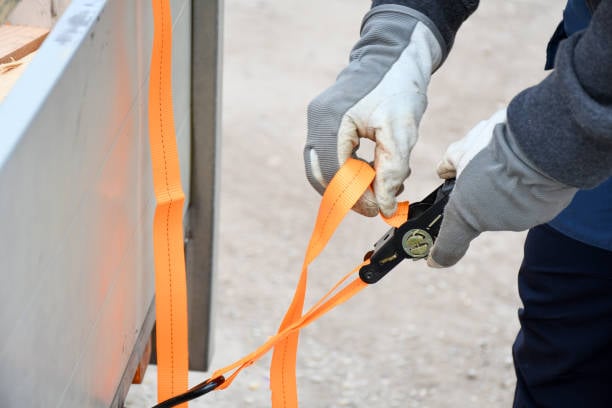Understanding the Working Load of a Ratchet Strap
When it comes to securing cargo during transportation, ratchet straps are an indispensable tool. These straps are designed to provide a secure and tight hold, ensuring that your load remains stable throughout the journey. However, to ensure the safety of your cargo, it is essential to understand the working load of a ratchet strap. In this article, we will delve into the intricacies of ratchet strap working loads and provide you with all the information you need to know.
What is the Working Load Limit (WLL)?
The Working Load Limit (WLL) of a ratchet strap refers to the maximum load that it can safely handle during normal use. It is crucial to understand the WLL of a ratchet strap to prevent overloading, which can lead to strap failure and potential accidents.
Factors Affecting the Working Load Limit
Several factors influence the Working Load Limit of a ratchet strap:
1. Material Strength
The material used in the construction of the ratchet strap plays a crucial role in determining its working load limit. Common materials include polyester, nylon, and polypropylene, each with varying strength capacities.
2. Width and Thickness
The width and thickness of the ratchet strap also impact its working load limit. Thicker and wider straps typically have higher load capacities compared to narrower ones.
3. Ratchet Mechanism
The quality and design of the ratchet mechanism influence the working load limit of a ratchet strap. A well-designed ratchet mechanism ensures a secure and reliable hold, allowing for higher load capacities.
4. Stitching and Webbing
The stitching and webbing of a ratchet strap contribute to its overall strength. High-quality stitching and durable webbing materials enhance the working load limit of the strap.
How to Determine the Working Load Limit?
To determine the working load limit of a ratchet strap, you must refer to the manufacturer's specifications. It is important to note that the working load limit is typically stated in pounds or kilograms and should never be exceeded.
Ensuring Safe Usage of Ratchet Straps
Using ratchet straps safely is crucial to prevent accidents and ensure the security of your cargo. Here are a few tips to keep in mind:
1. Inspect the Strap
Before each use, carefully inspect the ratchet strap for any signs of damage or wear. Look for frayed edges, broken stitching, or any other issues that may compromise its working load limit.
2. Choose the Right Strap
Select a ratchet strap that is appropriate for your specific load requirements. Consider the weight, shape, and size of your cargo when choosing the strap to ensure it can handle the load safely.
3. Secure the Load Properly
Ensure that the load is evenly distributed and properly secured before tightening the ratchet strap. Unevenly distributed loads can strain the strap and decrease its working load limit.
4. Follow Proper Tensioning Procedures
Follow the manufacturer's instructions for tensioning the ratchet strap correctly. Over-tightening or under-tightening can affect the strap's working load limit and compromise its effectiveness.
5. Regularly Maintain and Replace
Regularly maintain your ratchet straps by cleaning them and storing them properly. Replace any damaged or worn straps immediately to ensure the highest level of safety.
Conclusion
Understanding the working load limit of a ratchet strap is crucial for ensuring the safe transportation of your cargo. By considering factors such as material strength, width, and thickness, as well as following proper usage and maintenance guidelines, you can maximize the effectiveness and safety of ratchet straps. Always remember to refer to the manufacturer's specifications and never exceed the stated working load limit to prevent accidents and damage to your cargo.

